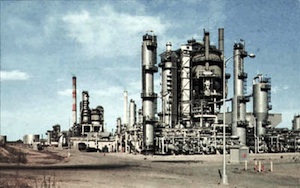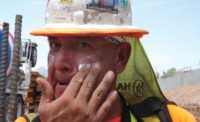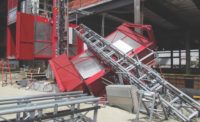
How long does a worker have to file a lawsuit after symptoms of asbestos-related disease appear?
Despite 40 years of litigation and the existence of “discovery rules” that determine how statutes of limitation apply to asbestos-related illness, the issue remains controversial.
Case in point: A state appeals court in Delaware’s New Castle County last month made a ruling involving an employee of a company that was acquired by URS Corp. The ruling involves the worker’s contention that he didn’t receive or understand at first the medical terminology in his earliest diagnosis.
The appeals-court panel reinstated the claim dismissed by a lower court originally filed, in 2009, by oil-refinery worker Paul DaBaldo Jr. and his wife. He had worked at the Getty Tidewater Oil Refinery in Delaware from 1967 to 2001. His original employer, Catalytic, Inc. and Crane Co., was acquired by Raytheon Constructors, which was acquired by Washington Group International. URS Energy & Construction, part of San Francisco-based URS Corp., later acquired the unit from Washington Group.
DeBaldo sued URS and 19 other defendants for damages related to his illness. URS argued that DeDaldo’s claim was time-barred—in short, the clock had run out. Debaldo then appealed, saying his claim was made on time.
Long Medical History
The medical history goes back to the 1990s. DaBaldo’s primary-care physician first instructed him to have a chest X-ray in 1992, so he did. A radiologist interpreted the X-ray to reveal “bilateral calcified pleural plaques suspicious for asbestosis exposure.”
For DaBaldo's case, at that moment, the clock on Delaware’s two-year-long statute of limitations began ticking.
DeBaldo's primary-care physician, after reading the 1992 report from the radiologist, wrote to DeBaldo that "there seems to be little doubt that there is a mild degree of asbestos-related pleural disease," according to court documents.
"My doctor seemed assured that it was—use the term 'OK,' because he didn't caution me on anything," DeBaldo stated in his deposition. "And, you know, I would see him regularly."
DaBaldo claims he didn’t receive a copy of that 1992 doctor’s report nor did he get copies of other subsequent reports on his chest X-rays, which were interpreted by doctors. It wasn’t until 2007 that he received an unequivocal asbestosis diagnosis from a doctor, DeBaldo’s lawsuit claims.
In many states, the “discovery rule” dictates whether a claim can be made, says Kenneth Fryncko, a Pittsburgh attorney who represents clients in asbestos-related cases. “The statute of limitations begins to run when you know or should have known you had asbestosis,” he says.
That rule dates back to the Borel v. Fireboard Paper case, a 1973 federal appeals-court decision upholding a jury verdict. It set a precedent under which the cause of action doesn’t start until the disease is discovered or reasonable due diligence should have discovered it.
The clock doesn’t begin to tick until “the effects of the exposure manifest themselves,” wrote the judges on the Borel case.
Unread Reports





Post a comment to this article
Report Abusive Comment